
Unbeknownst to many, while the gunpowder, the cotton gin, and the iPhone often steal the spotlight when it comes to groundbreaking inventions, there exists a vast array of lesser-known yet equally significant creations that effortlessly streamline our everyday existence. Behind these marvels lie the brilliant minds of African American inventors, who have bestowed upon society remarkable and invaluable contributions. The absence of blood banks, personal computers, or reasonably priced shoes would leave us in awe, contemplating a world drastically different from our own. These remarkable achievements, along with numerous others, owe their existence to the unparalleled genius of ten visionary Black inventors. Here are 10 black inventors who changed our world.
10. Alexander Miles (1838–1918)

Although Alexander Miles’s personal life remains shrouded in mystery, his profound impact on elevator safety cannot be ignored. Residing in Duluth, Minnesota, during the late 19th century, this inventive genius revolutionized the industry with his groundbreaking creation: automatic doors. In an era when elevator passengers were burdened with the responsibility of manually operating both the elevator doors and the doors to the shaft itself, inadvertently leaving the shaft open posed a grave risk to unsuspecting individuals. With his brilliant solution, patented in 1887, Miles ingeniously devised a mechanism that synchronized the closure of both doors simultaneously, effectively averting tragic accidents. Astonishingly, this transformative technology, born from the mind of Alexander Miles, continues to grace the elevators of today, ensuring the safety and peace of mind of countless passengers worldwide.
9. George Washington Carver 1860–1943)
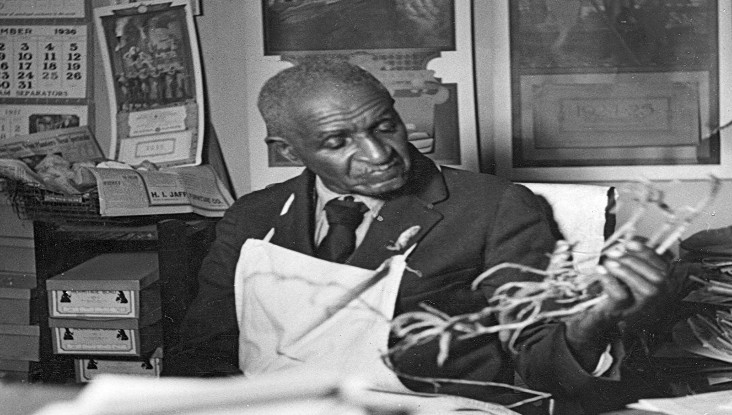
In the heartland of Missouri, a young soul named George Washington Carver emerged into a world still grappling with the remnants of slavery. As the echoes of the Civil War faded, a precious opportunity for education beckoned Carver forth. In an era where higher learning remained a distant dream for Black Americans, Carver defied the odds and pursued his passion, culminating in the acquisition of both undergraduate and master’s degrees in agricultural science from the esteemed Iowa State Agricultural College.
Booker T. Washington, a towering figure of inspiration, recognized Carver’s exceptional talent and entrusted him with the stewardship of the agricultural department at Alabama’s renowned Tuskegee Institute. With fervor and dedication, Carver embarked on a mission of enlightenment for farmers, imparting wisdom on the delicate art of fertilization and the transformative power of crop rotation. As the region’s primary crop, cotton, voraciously depleted the soil of its life force, Carver conducted meticulous studies to unearth the crops that could restore the earth’s vitality. Among these discoveries were the wondrous effects of legumes and sweet potatoes, invigorating the fields with their bountiful abundance. Alas, despite their profound potential, the demand for these agricultural treasures fell disappointingly short. Ever the visionary, Carver embarked on a daring path of innovation, unleashing the latent power of a seemingly unremarkable legume—the peanut. Harnessing his boundless ingenuity and scientific prowess, Carver harnessed over 300 groundbreaking products from this unassuming treasure trove. From the simplest laundry soaps to the frontiers of plastics and even the revolutionary realm of diesel fuel, Carver’s genius knew no bounds. By the dawn of 1940, the humble peanut had evolved into the South’s second-largest cash crop, bearing testament to Carver’s unparalleled foresight, inventiveness, and unwavering commitment to the progress of agriculture.
8. Patricia Bath (1942–2019)
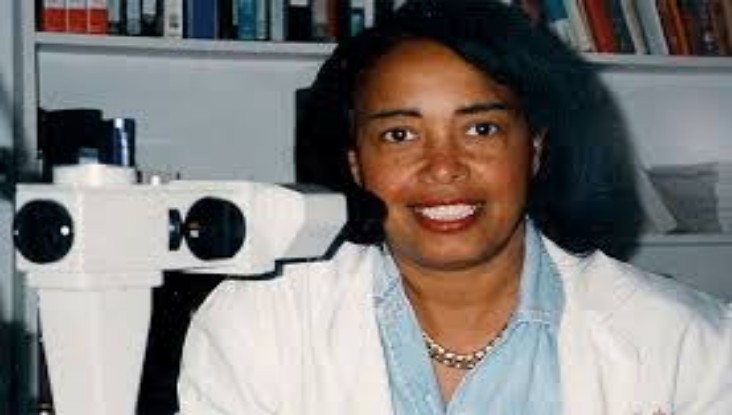
Innovator extraordinaire, Dr. Patricia Bath, left an indelible mark on the field of ophthalmology with her revolutionary invention, the Laserphaco Probe, a groundbreaking device that elevated laser cataract surgery to unprecedented heights. With her pioneering spirit and unwavering determination, Bath obtained a patent for this remarkable creation in 1988, cementing her status as the first female African American doctor to receive a medical patent.
But Bath’s trailblazing accomplishments extend far beyond this momentous achievement. She shattered barriers as the first Black American to successfully complete a residency in ophthalmology at the prestigious New York University. Breaking down gender barriers as well, Bath became the first female to hold the position of chair in an ophthalmology residency program in the United States, forging pathways for future generations of aspiring female doctors. Not content with merely rewiring the landscape of ophthalmology, Bath co-founded the American Institute for the Prevention of Blindness, a testament to her unwavering dedication to combating vision loss and promoting ocular health. However, her transformative impact did not end there. Bath’s groundbreaking research on health disparities between Black patients and their counterparts gave life to a revolutionary discipline known as “community ophthalmology.” Through this visionary approach, volunteer eye workers offer vital primary care and treatment to underserved populations, forever bridging the gap in access to necessary eye care.
7. Jan Ernst Matzeliger (1852–1889)
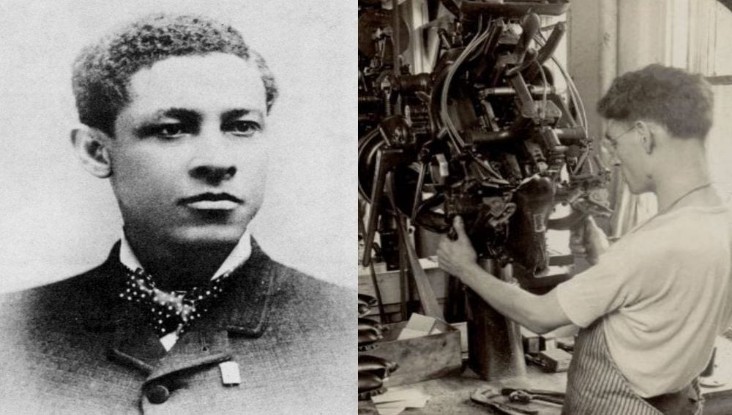
Jan Ernst Matzeliger, an immigrant hailing from Dutch Guiana (now known as Surinam), forever altered the course of footwear history in the 19th century. With ingenuity and determination, Matzeliger, who had undertaken an apprenticeship at a Massachusetts shoe factory, developed a revolutionary automated machine that revolutionized the shoemaking process.
Gone were the days when shoes were a luxury reserved for the wealthy. Matzeliger’s extraordinary invention allowed for the speedy attachment of a shoe’s upper part to its sole. After undergoing refinement, this groundbreaking device had the jaw-dropping capacity to produce a staggering 700 pairs of shoes per day. This astronomical increase in productivity compared to the meager 50 pairs a skilled worker could sew manually marked a seismic shift in the industry. The impact of Matzeliger’s creation extended beyond numbers and quotas, however. By streamlining the manufacturing process and reducing labor costs, the prices of shoes plummeted. Suddenly, footwear became a tangible aspiration for the average American, no longer an unattainable luxury.
6. Marie Van Brittan Brown (1922–1999)
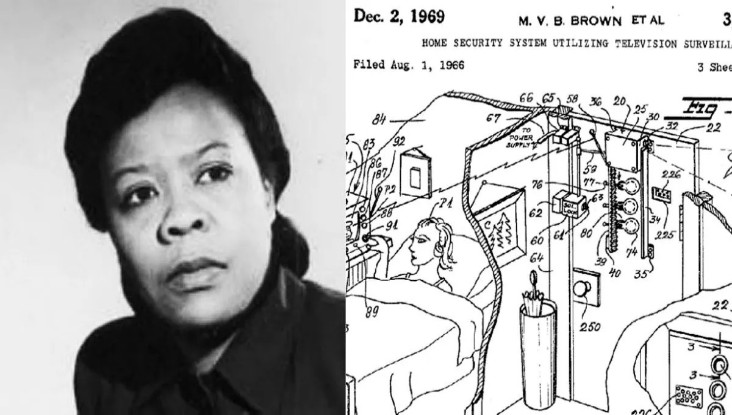
Marie Van Brittan Brown, an inventive nurse, bestowed a newfound sense of security upon homeowners with her groundbreaking creation – an early iteration of the contemporary home TV security system. Nestled in the midst of a high-crime region in New York City, Brown was disheartened by the inconsistent response of the local police force to emergent situations. To establish a sanctuary within their own abode, Brown and her husband devised an ingenious mechanism wherein a motorized camera delicately peered through a meticulously placed set of peepholes, transmitting images seamlessly onto a television monitor.
The brilliance of their device did not cease at visual surveillance alone. Comprehending the value of effective communication, the Browns integrated a state-of-the-art two-way microphone, facilitating seamless interaction with individuals outside their premises. Recognizing the crucial need for instant action, they also incorporated an emergency alarm button, capable of promptly notifying the police during moments of potential perilousness. In a significant testament to their brilliance, the Browns successfully submitted a patent for their resolute closed-circuit television security system in 1966. This extraordinary accomplishment culminated in the ultimate validation on December 2, 1969, when their innovation garnered official approval.
5. George Carruthers (1939–2020)
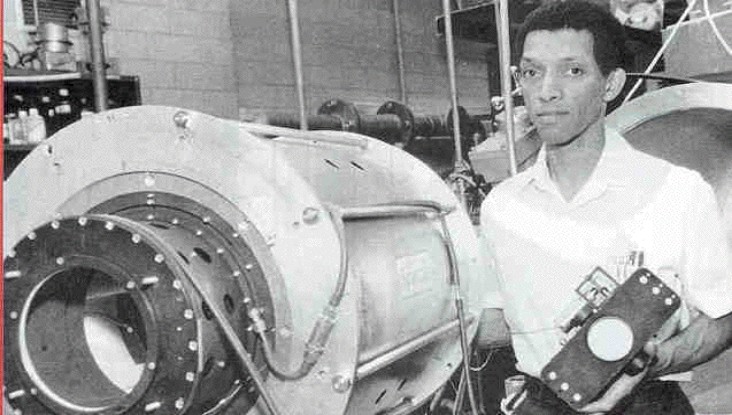
In the realm of astrophysics, George Carruthers emerged as a luminary, dedicating his illustrious career to the Space Science Division of the esteemed Naval Research Laboratory (NRL) nestled within the heart of Washington, D.C. Revered for his monumental achievements, Carruthers etched his name in history through the creation of the extraordinary ultraviolet camera/spectrograph, a feat that reverberated during NASA’s memorable launch of Apollo 16 in 1972.
This groundbreaking invention proved instrumental in unraveling the elusive existence of molecular hydrogen within the enigmatic expanses of interstellar space. A testament to Carruthers’ indomitable spirit, his pioneering ultraviolet camera/spectrograph underwent further refinement, leading to its deployment on the United States’ maiden space station, Skylab, in 1974. Here, space scientists adroitly employed the upgraded model to gaze upon the resplendent visage of Halley’s Comet, along with myriad other celestial phenomena that captivated the imagination. The profound impact of George Carruthers’ contributions to the field of astrophysics and space exploration did not go unnoticed. His prodigious accomplishments gracefully earned him induction into the revered National Inventors Hall of Fame in 2003, cementing his legacy as a visionary and pioneer.
4. Madam C. J. Walker (1867–1919)
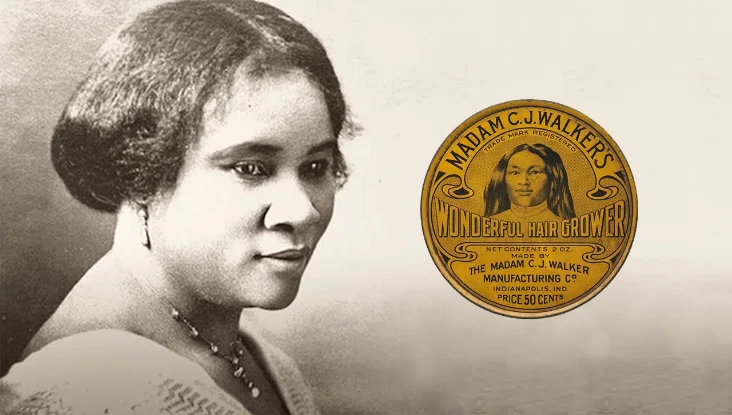
In the annals of history, there exists the indomitable spirit of Madam C.J. Walker, whose ascent from the humble beginnings as the daughter of Louisiana sharecroppers, to the exalted title of America’s first self-made female millionaire, renders an extraordinary tale. Born Sarah Breedlove, her formative years were plagued by adversity, as she found herself orphaned and widowed by the tender age of 20. However, destiny bestowed upon her a twist of fate upon her relocation to St. Louis, where her brothers plied their trade as barbers.
Suffering from the affliction of hair loss, Breedlove embarked on a journey of experimentation, immersing herself in a tapestry of diverse hair care formulations, including the remarkable concoctions crafted by the astute Black entrepreneur, Annie Malone. Galvanized by her newfound knowledge and armed with an unwavering resolve, Breedlove assumed a new identity – the illustrious Madam C.J. Walker – a moniker symbolizing the heights she aspired to reach. Harnessing her entrepreneurial prowess, Madam C.J. Walker not only championed her own hair-growing elixir, meticulously designed for the unique needs of Black women, but also embarked upon a ceaseless crusade to magnify its reach through unprecedented promotion. In her wake, a resplendent tapestry of beauty schools, salons, and training havens blossomed across the expanse of America, redefining industry norms and carving a path for future generations to follow.
3. Mark E.Dean (1957-)

Take a moment to appreciate the genius behind the iconic IBM personal computer, for a significant portion of its glory can be attributed to none other than the esteemed Mark E. Dean (born. As a distinguished computer scientist and engineer, Dean embarked on an incredible journey within the confines of IBM, where he ushered in a new era by leading the pioneering team responsible for the inception of the groundbreaking ISA bus. This revolutionary hardware interface revolutionized the landscape by enabling the seamless integration of multiple devices, including printers, modems, and keyboards, into a single computer. Thus, the personal computer found its firm footing in the realms of office and business settings, forever transforming the way we work and interact.
Dean’s indomitable spirit and prodigious skills propelled him to further unparalleled achievements. He played an instrumental role in the development of the inaugural color computer monitor, ushering in vibrant visual experiences that captivated users across the globe. However, his thirst for innovation knew no bounds, as evidenced by his role as the leader of the team that birthed the world’s first gigahertz chip in the year of 1999. This groundbreaking milestone solidified Dean’s place in the annals of history, propelling him to the forefront of technological advancement. Today, it is with great pride that we declare Mark E. Dean as the possessor of three of IBM’s original nine patents and a staggering collection of over 20 patents overall. These intellectual achievements signify the breadth and depth of his contributions to the world of computer science, serving as a testament to his unwavering dedication and remarkable ingenuity. In light of his remarkable accomplishments, it came as no surprise when Dean was inducted into the esteemed National Inventors Hall of Fame in the year 1997.
2. Charles Richard Drew
(1904–1950)
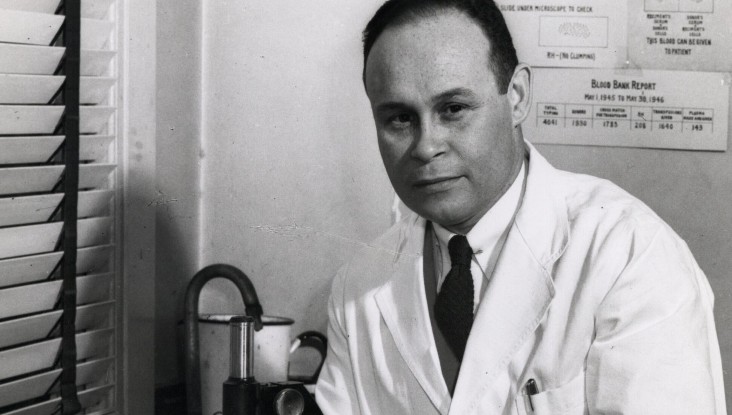
The incredible impact of Charles Richard Drew on countless lives cannot be overstated. This pioneering physician, renowned for establishing America’s first major blood banks, holds a place of honor in medical history. Drew’s educational journey led him to the prestigious McGill University Faculty of Medicine in Montreal, where he specialized in surgery. Immersed in the field, he delved deep into the intricacies of transfusion medicine during his post-graduate internship and residency. His insatiable quest for knowledge continued at Columbia University, where he meticulously refined vital techniques for collecting, processing, and preserving plasma.
As the tempest of World War II raged across Europe in 1940, Drew found himself at the helm of a pivotal project dubbed “Blood for Britain.” His leadership and expertise revolutionized the collection of thousands of pints of plasma from hospitals in New York. The life-saving plasma was then promptly shipped overseas to treat wounded European soldiers. Immersed in his work, Drew devised an ingenious solution known as “bloodmobiles” – refrigerated trucks functioning as mobile collection centers and transportation vessels for this vital resource.
The following year witnessed another pivotal milestone in Drew’s extraordinary career. He spearheaded the development of a blood bank specifically catering to military personnel under the esteemed banner of the American Red Cross. From this noble endeavor emerged the prodigious American Red Cross Blood Donor Service. However, Drew’s unwavering commitment to the principles of equality and justice would eventually lead to a difficult decision. When he discovered that the military segregated blood donations based on race, he chose to resign in protest, firmly standing against such discriminatory practices. Drew’s unwavering dedication to serving others manifested throughout his life as a surgeon and professor, leaving an indelible mark on the medical field. In 1943, he shattered barriers and made history as the first Black doctor appointed as an examiner for the American Board of Surgery, underscoring his exceptional competence and inspiring generations of aspiring medical professionals.
1. Thomas L. Jennings (1791–1859)

The groundbreaking achievement of Thomas L. Jennings cannot be understated. He shattered barriers as the first African American to secure a patent in the United States, setting a remarkable precedent for future inventors of color to protect their revolutionary creations. Jennings, a skilled tailor and dry cleaner residing in New York City back in the day, devised a pioneering technique called “dry scouring.” Astonishingly, he obtained the patent for this remarkable process in 1821—an impressive four years ahead of Jean Baptiste Jolly-Bellin, a Paris-based tailor who is often credited with establishing the world’s inaugural dry cleaning enterprise.
However, it wasn’t smooth sailing for Jennings. The audacity of a Black individual acquiring a patent drew substantial objections. Fortunately, Jennings managed to exploit a loophole in the system—he was a free man. During that era, U.S. patent laws explicitly stated that the “[enslaver] is the owner of the fruits of the labor of the slave both manual and intellectual.” This legal provision effectively stripped enslaved individuals of their rights to intellectual property. Yet Jennings, being a free man, eluded these constraints and triumphed in claiming ownership of his ideas and inventions—an act that defied societal norms and ignited hope for countless others.
It is worth mentioning that Congress played a pivotal role in rectifying the injustice faced by African Americans. In subsequent years, they enacted legislation to extend patent rights to all individuals of African descent, irrespective of their enslavement or liberty. Moreover, Jennings leveraged the proceeds from his groundbreaking invention to liberate the remainder of his family from the chains of bondage. Additionally, he generously donated to various abolitionist causes, dedicating his resources to combating slavery and advancing the cause of freedom.
See Also: The 12 Best Cities to Live in the US

